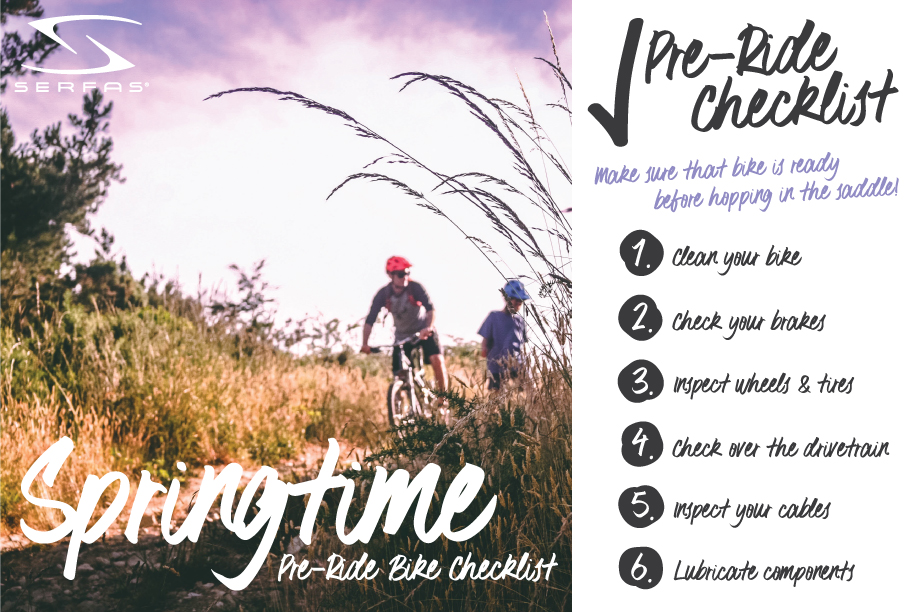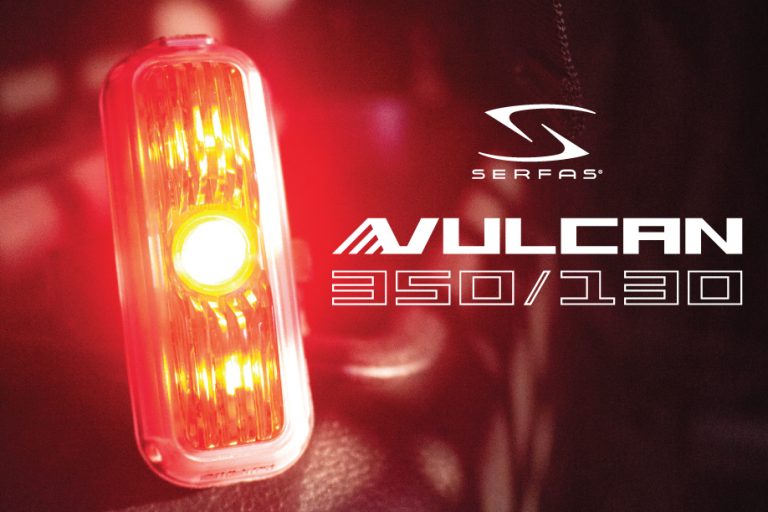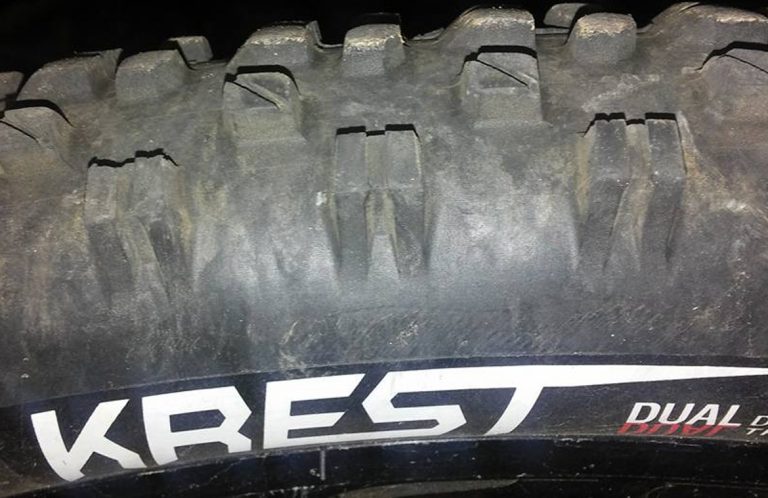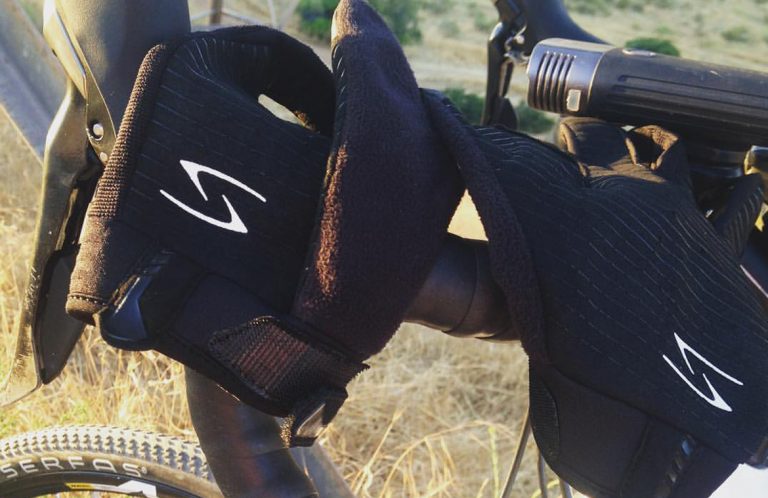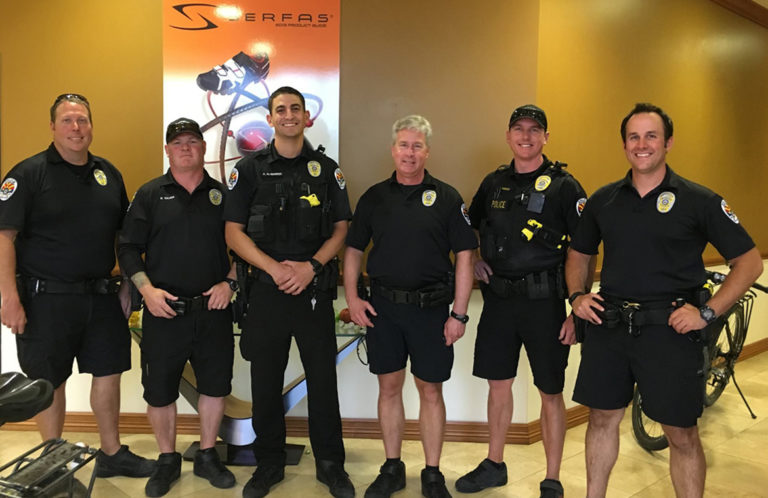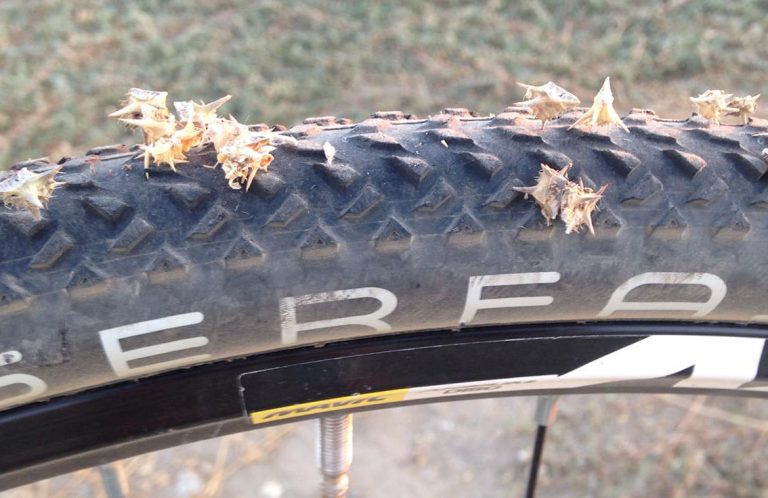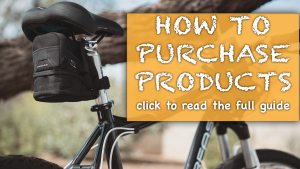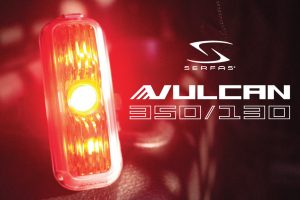Springtime Pre-Ride Bike Checklist
1. Clean Your Bike
Start with a clean slate and get that bike clean! To get the most out of your components give them a bath using any of the available bike-safe cleaning solutions on the market or even simply a biodegradable dish washing soap mixed into a warm bucket of water. Get yourself a soft bike cleaning brush, or just grab an old toothbrush, and gently scrub away dirt and grease. *Be sure to include the bike frame, cassette, derailleurs, chain rings, chain, brakes, pedals, and saddle in this cleaning process.
*Make sure to refer to your particular bike manufacturer’s guidelines for what is safe to use on your bike to prevent damage to components or paint finishes.
2. Check Your Brakes
You know what’s exciting, squeezing your brakes to stop and then not stopping. Not really though. For your safety and for those around you it’s especially important to be sure your bike’s brakes function properly and do so predictably. Look over the parts of the braking system, look for any signs of damage, wear, or corrosion. Check the brake pads and make sure they are installed and seated properly against the rim and wearing down evenly with use. While stationary, check your brakes by squeezing the brake levers and watch to see how they operate and feel, if they feel too stiff or too loose the brake tension should be adjusted according to recommended manufacturer specifications for your bike. Ultimately, it’s crucial to make sure you have complete control of your bike and doing so requires your braking system to be in correct working order — if your brakes are not working properly we recommend you please do not ride and consult your bike manufacturer or local bike shop for service.
3. Inspect Wheels & Tires
Look at your bike wheels/rims and make sure they show no signs of impermissible damage. Cosmetic damage (dents, scrapes, small gouges, etc.) is expected with regular use over time and is okay so long as the wheels spin straight and freely without any side-to-side wobble. Inspect wheel spokes and make sure they are not loose, bent, or damaged. Spokes can be adjusted using a spoke wrench but need to be serviced correctly, it is recommended to have a local bike shop check them and take care of these adjustments for you if needed.
Tires are especially important, they’re what connect you to the surfaces you ride on. Inspect the tires on your bike and look for any holes, cracking, splits, or tears in the rubber — if any of these conditions exist you should replace the tire if it is beyond eligibility for repair. Also check the tread on your tires to be sure you have enough tread left to comfortably handle the surface conditions you plan to ride, not having enough tread will limit traction and can leave you spinning your wheels! Whether you run tubes or tubeless, make sure these systems are functioning properly, are in good shape, and are holding pressure with no leaks.
4. Check Over The Drivetrain
The drivetrain of your bike is like what a transmission is to a car, it converts energy from you (the cyclist) into power that transfers through the lower components and in turn drives the rear wheel. The chain, pedals, derailleur, cassette, chainring, etc… are all part of this drivetrain system, and being a system means all of the parts need to be working correctly in order for it to function as a whole. You will want to check to make sure shifting operations are smooth and performed with ease. If you find shifting is not smooth it commonly means the derailleur needs adjustment or repair, it is recommended to consult your local bike shop to service this for you as it may be difficult unless you know what and how to do this.
5. Inspect Your Cables
Cables are what control brake and shifting operations from the handlebar brake levers and shifters. Over time and regular use these cables will eventually stretch and get worn out depending on the amount and kind of riding you do. Generally cables should be replaced about every two to five years, or even yearly if you ride all year long. When inspecting your cables look for cracks in the cable housings, and rust, dirt, or crimps in the cable itself. Replacing cables is something you can do at home if you know what to do and have the time, they are inexpensive to replace but like any more involved bike maintenance or repairs we recommend having your local bike shop perform these services for you.
6. Lubricate Components
A bike’s chain and other drivetrain components need lubrication to function and last a long time without premature failure, much the same way that a car’s engine will not run without oil. Proper lubrication is essential to making sure a bike can operate smoothly and efficiently, it also protects its moving parts from dirt and other performance-robbing contaminants. After cleaning (refer to Step 1), a bicycle compatible and approved lubricant needs to be applied to the chain and any moving parts located on the derailleur and any exposed cabling. Most of us grew up with a neighborhood kid that had a bike you could hear from a mile away, don’t be that kid and make sure to keep your bike’s components properly lubricated to help ensure you get many enjoyable years of service from your bike.


